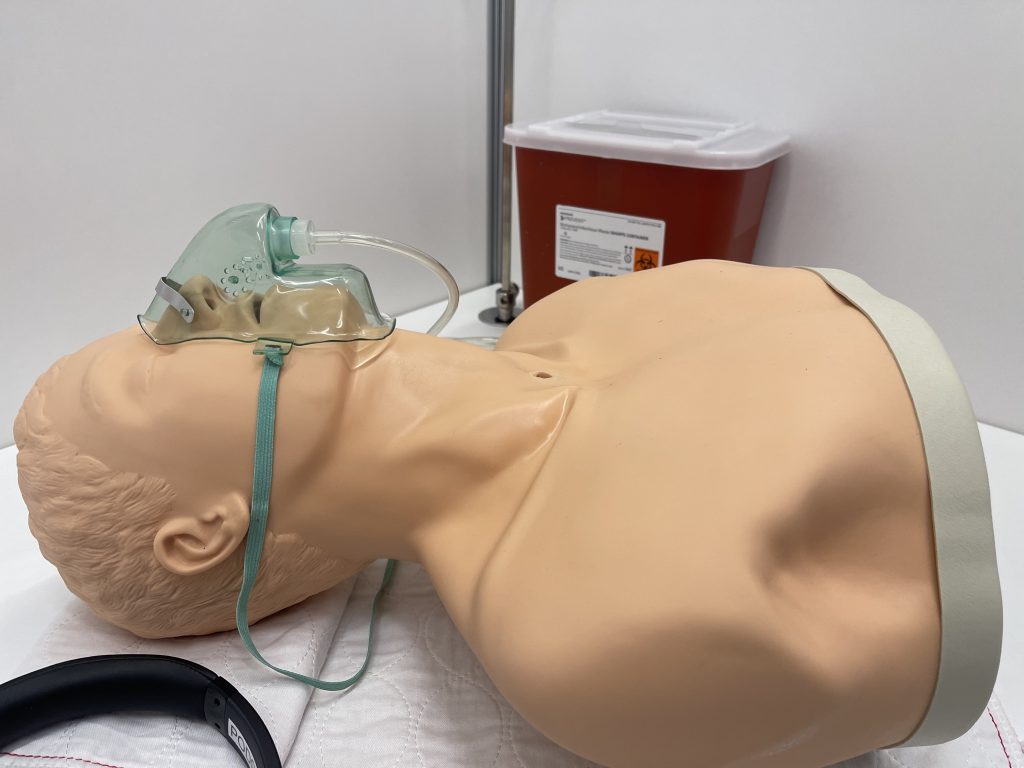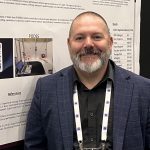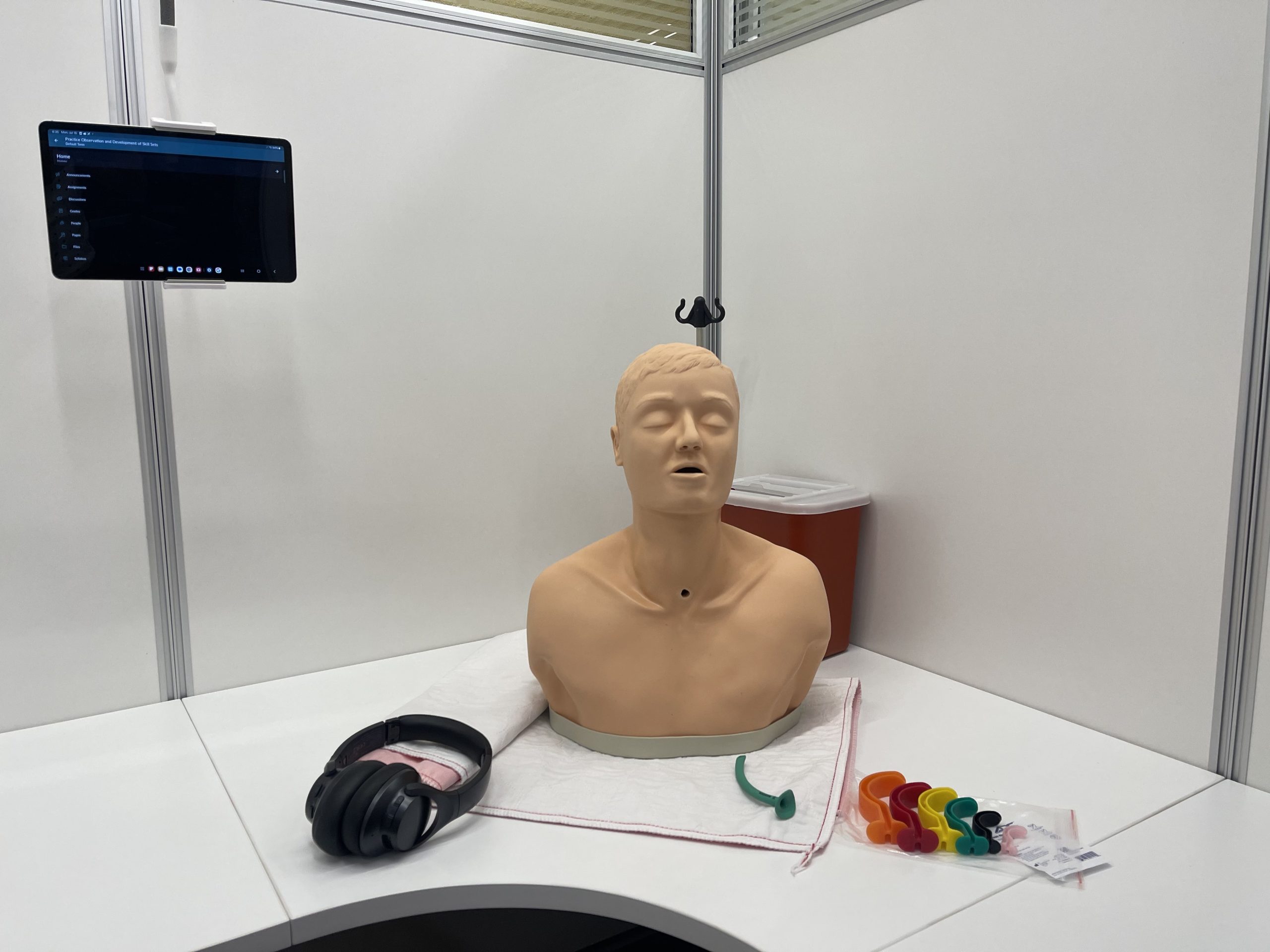This article seeks to explore a new approach to nursing skills acquisition methodology. Practice Observation and Development of Skills Sets (PODSS) is a dedicated physical space designed to facilitate skill acquisition, particularly kinesthetic skills, among nursing students. The aim of this approach is to allow for deliberate practice of skills prior to a simulation so as to reduce cognitive load upon simulation participants. The article will provide an in-depth overview of the PODSS concept and its various phases for developing kinesthetic competency. Furthermore, it examines the student’s role in the skill acquisition process, the scheduling of PODSS, and the recovery of PODSS stations after use.
If you are involved in nursing simulation then the following description may sound familiar. Students are given a written assignment and are prepared for a simulation through a case study or perhaps a concept map. On the day of the simulation a pre-briefing is conducted and then the students are allowed to orient themselves to the simulation lab. Once the simulation begins everything is going smoothly. The students introduce themselves, ask the patient for their name and date of birth, and ascertain if the patient has any allergies. In your mind, you have hope that everything will go as smoothly as this opening sequence. Then, the first nursing skill of any consequence is required to move the simulation along. For this example, let’s say that the students have to employ an IV pump. Everything immediately bogs down. The students almost seem stuck on their inability to use the pump. You as the facilitator are forced to intervene, thereby decreasing the overall fidelity of the simulation. If this sounds even vaguely familiar, take heart! You are not alone.
Deliberate Practice
Deliberate practice is a structured and systematic approach to skill acquisition that holds immense value in the field of nursing. It goes beyond mere repetition of tasks and aims to hone nursing skills, ultimately improving patient care and outcomes. This method involves targeted practice, immediate feedback, and continual refinement in a healthcare setting, with the primary goal of achieving mastery in various nursing competencies.
The method used for deliberate practice in nursing skills acquisition typically involves the following steps:
Goal Setting: Nurses identify specific skills or competencies they wish to improve. This could range from administering injections, wound care, patient assessment, or communication skills.
Focused Practice: Nurses engage in repetitive, purposeful, and task-specific practice. They might work on simulations, practice scenarios, or real patient interactions under the guidance of experienced mentors or educators.
Immediate Feedback: Feedback is a critical component of deliberate practice. Mentors, peers, or self-assessment are used to evaluate performance. Constructive feedback helps nurses pinpoint areas for improvement and adjust their practice accordingly.
Iterative Improvement: Nurses continue to practice, incorporating feedback and adjusting in subsequent sessions. This cyclical process of practice and feedback helps refine their skills over time.
The setting for deliberate practice in nursing can vary, with a range of options including clinical practice settings, simulation labs, and educational institutions. Simulated scenarios often provide a controlled environment where nurses can practice without compromising patient safety.
The preferred outcomes of deliberate practice in nursing are manifold:
Enhanced Competency: Deliberate practice ensures that nurses become more skilled, confident, and competent in their clinical abilities, which is crucial for patient safety.
Improved Critical Thinking: It fosters critical thinking and problem-solving skills, enabling nurses to make quick and effective decisions in high-pressure situations.
Error Reduction: With deliberate practice, nurses are less likely to make errors in patient care, reducing the risk of adverse events.
Better Patient Care: Ultimately, the main outcome is improved patient care. Skilled nurses can provide a higher standard of care, leading to better patient outcomes and satisfaction.
Professional Growth: Deliberate practice supports ongoing professional development, making nurses more adaptable to changes in healthcare practices and technologies.
The draw back to the use of deliberate practice is that it requires instruction personnel to be present for the immediate feedback of the skill. In today’s educational nursing paradigm, we simply do not have the faculty to support deliberate feedback in its entirety.
Functional Definition of PODSS:
PODSS is a physically enclosed space with three sides, specially designated for guided practice of nursing skills. Its primary objective is to provide students with a controlled environment where they can engage in skill development. This development is facilitated through prerecorded video tutorials that guide students through each skill. These guided practice sessions culminate in faculty review of the students’ recorded skill demonstrations. The overarching goal of PODSS is to increase the number of skill repetitions without overburdening faculty members.

Phases of Kinesthetic Competency:
Skill acquisition through PODSS follows a structured process, divided into six distinct phases:
- Phase One – Introduction: In this phase, students receive a brief introduction to the skill, including its description, categorization as an independent or collaborative intervention, safety considerations, and a video demonstration.
- Phase Two – Kinesthetic or Skill Acquisition: This phase involves step-by-step video tutorials breaking down the skill into its core components, from introduction and hand hygiene to completion.
- Phase Three – Deliberate Practice: Assuming some familiarity with the skill, this phase offers prompts through PowerPoint or video, allowing students to practice components of the skill.
- Phase Four – Student Self-Reflection: After achieving basic competence, students film themselves performing the skill, review the footage with a faculty-provided rubric, and identify areas for improvement.
- Phase Five – Faculty Verification of Competence: Faculty members gain access to students’ skill videos, review them, and determine whether additional practice is needed.
- Phase Six – Skill Maintenance: Faculty assigns skills that students have already demonstrated competence in for open lab practice to ensure that their skill sets remain sharp.
Student Process:
The student’s journey through PODSS primarily focuses on voluntary skill acquisition. This process includes an introductory video that provides essential information about the skill and step-by-step videos guiding students through its execution.
- Introductory Video: This video, a prerequisite for all skill-related videos, introduces the skill, categorizes it, highlights when it is typically needed, emphasizes key elements for safe practice, and presents a complete demonstration of the skill.
- Step by Step Video: This video is conducted in the PODSS physical space and systematically teaches the skill from introduction to clean up.
- Ghost Video with Faculty: This video allows students to practice the skill while a faculty member simultaneously performs it, with a narrator providing guidance for each step.
- Ghost Video with PowerPoint and Prompts: This final segment provides PowerPoint prompts that can be synchronized with the original video performance or manipulated by the student.
- Video Capture: Students film themselves performing the skill and upload it to their OneDrive account for later review, using a rubric for self-reflection.
Scheduling PODSS:
Scheduling PODSS is facilitated through a dedicated app, which provides a convenient platform for faculty and students to book time in the PODSS. Priority is given to lab courses utilizing PODS in a rotational scheme. Discussions with faculty are encouraged to determine suitable scheduling times, with Fridays currently available for open lab use.
Recovery of a PODSS Station:
After students finish their skill practice or filming, they are responsible for disposing of sharps in designated containers and returning equipment to labeled bins corresponding to the respective PODSS station. Faculty and staff inventory these bins and ensure the stations are reset to their original state.
Conclusion:
Practice Observation and Development of Skill Sets (PODSS) offers a unique and effective approach to skill acquisition in nursing education. By breaking down the skill acquisition process into well-defined phases, providing structured guidance, and offering opportunities for self-reflection and faculty verification, PODSS equips students with the tactile competence required in the nursing profession. The flexible scheduling of PODSS and efficient station recovery further enhance the overall learning experience. This article underscores the value of PODSS in advancing nursing education and ensuring the safety of future patients.
READ ALSO








































